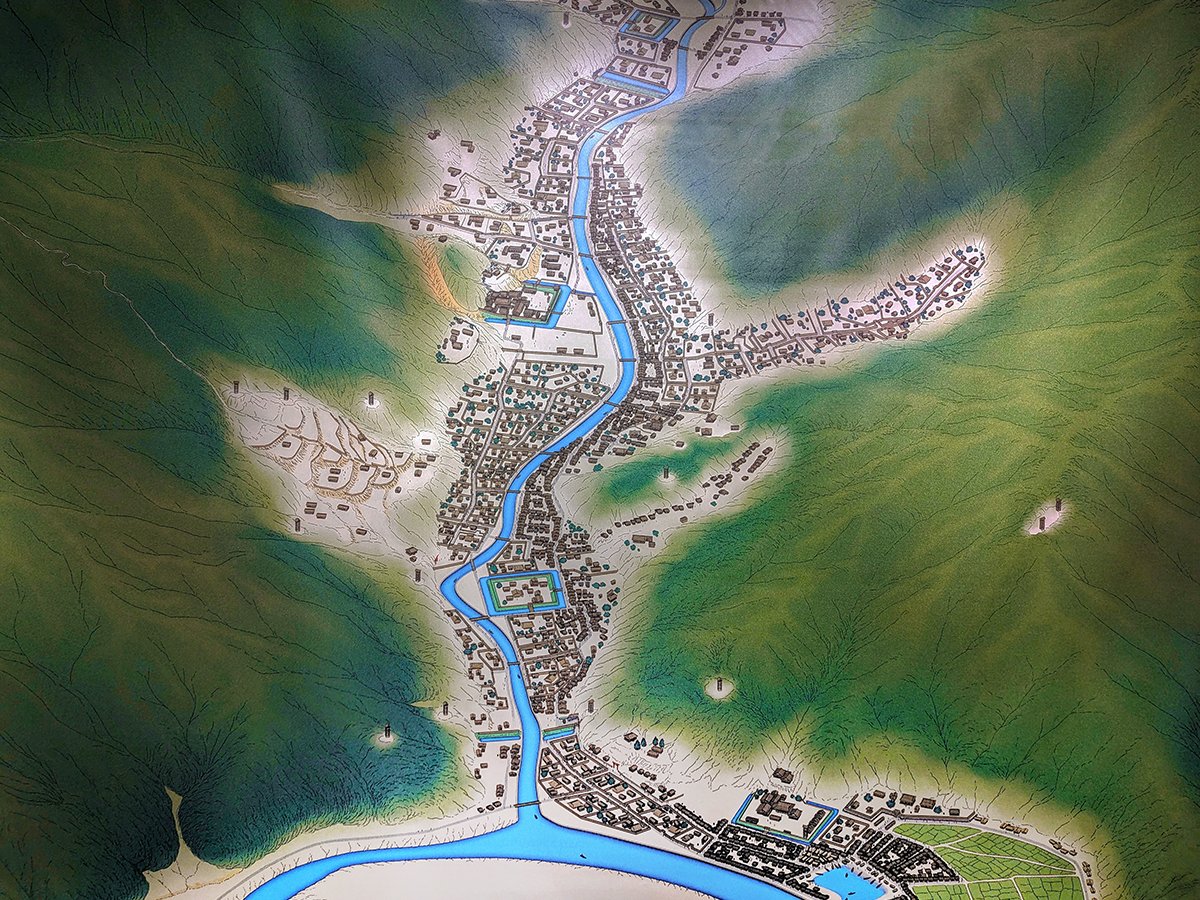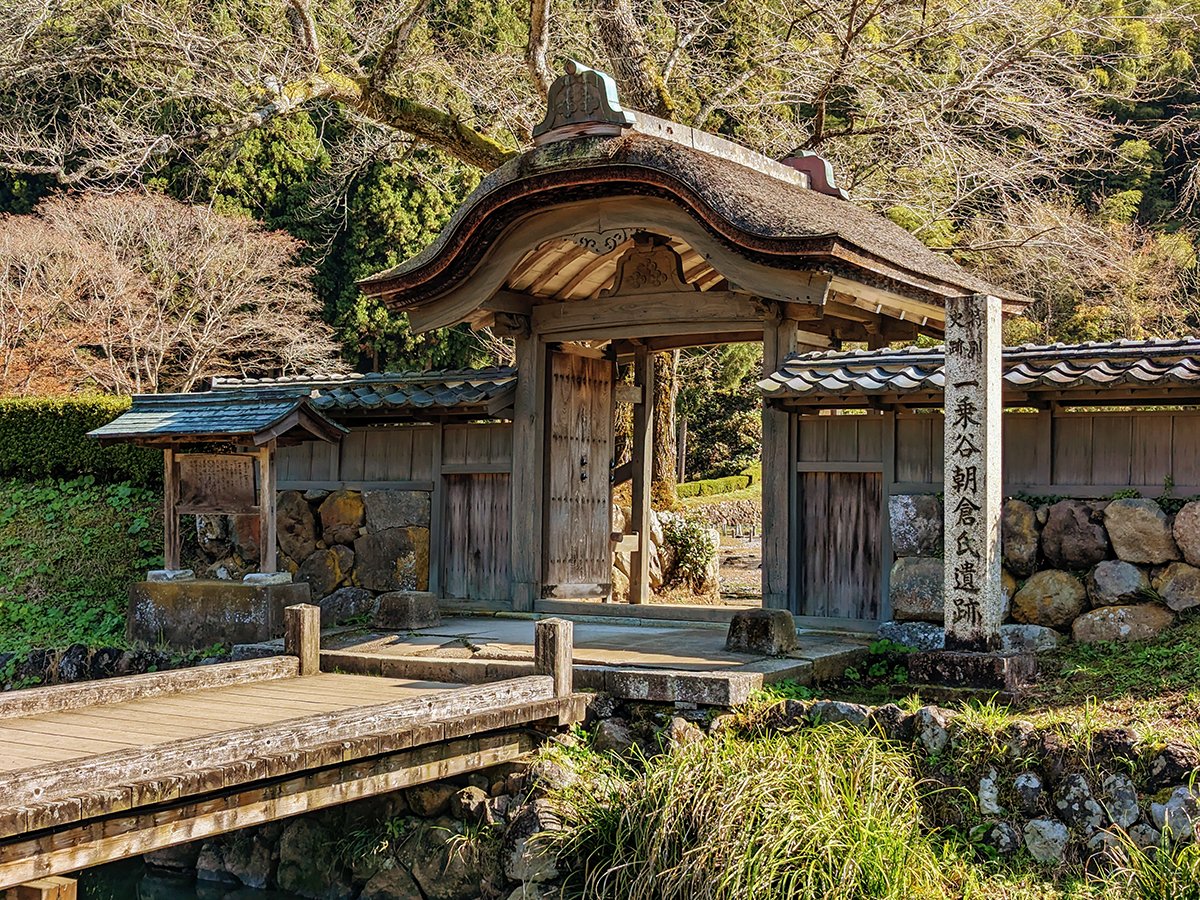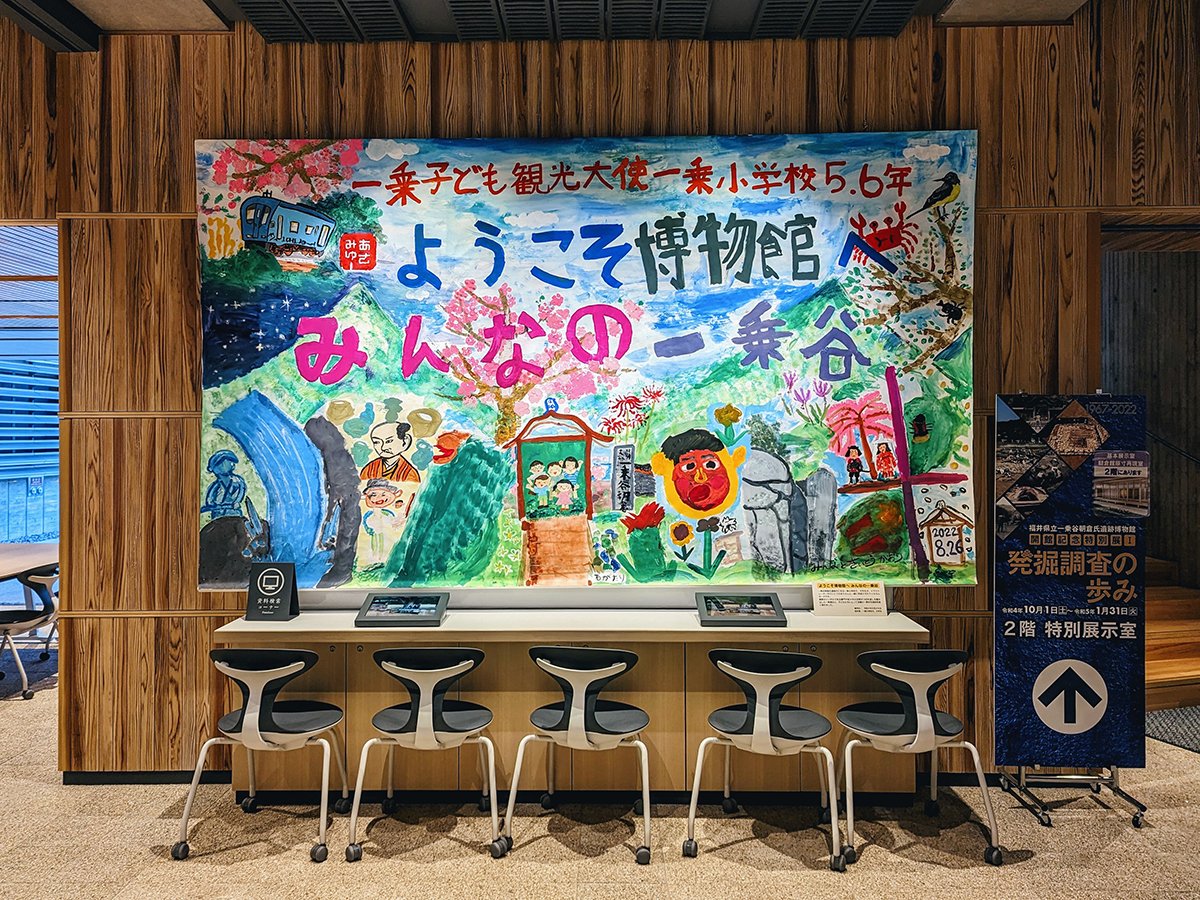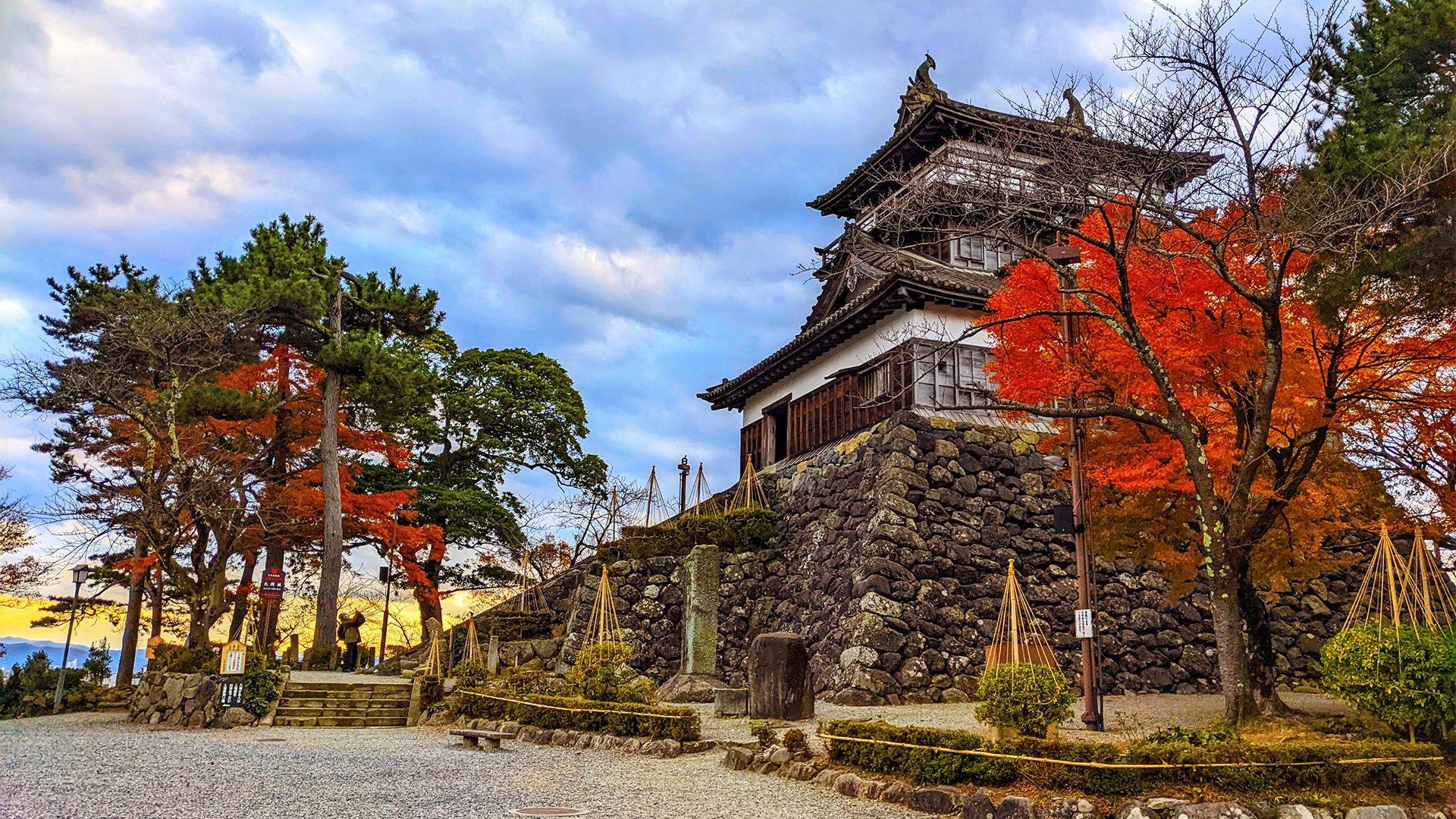Fukui’s Ichijodani Asakura Clan Ruins and Family Site Museum

The beautiful Ichijo Valley protects a fallen castle town.
Cover photo: The new Ichijodani Asakura Family Site Museum, Fukui City, Fukui Prefecture, Japan (2022). Photo by Danny With Love.
Intro
Recently, I visited the Ichijodani Asakura Clan Ruins (一乗谷朝倉氏遺跡), the remnants of a prosperous castle town in Fukui’s Ichijo Valley, ruled by the Asakura Clan for five generations, spanning a century amidst the Sengoku (Warring States) Period.
Located just 10 kilometers (6.2 miles) southeast of Fukui Station, Ichijodani is the largest site of medieval ruins in Japan, measuring 278 hectares (1 square mile).
At its peak, the castle town was the third-largest city in Japan, with over 10,000 inhabitants, including craftsmen, merchants, and doctors.
With 17 hectares (42 acres) of unearthed ruins, four individual gardens, a restored townscape, and a new state-of-the-art museum, Ichijodani provides a comprehensive view of life throughout the 15th and 16th centuries.
Asakura’s castle town is often referred to as Japan’s Pompei, due to the perfectly-preserved condition of the ruins, which are one of only six sites in Japan to receive a rare triple national designation as a Special Historic Site, Special Place of Scenic Beauty, and an Important Cultural Property.
Though featured in a 2010 series of SoftBank TV commercials, and the 2020 NHK samurai drama, Awaiting Kirin, of the six sites — Kinkaku-ji, Ginkaku-ji, and Daigo-ji Sanpo-in of Kyoto, Itsukushima Shrine in Hiroshima, and Nara’s Heijo Palace — the Ichijodani Asakura Family Ruins are perhaps the least well known.
History
The calamitous Onin War began in 1467, prompting the Kai and Asakura Clans to invade Echizen Province (present-day Fukui Prefecture). In 1471, the daimyo (feudal lord) Takakage Asakura defeated the Kai Clan and established his castle town in the strategic Ichijo Valley.
The word dani means “valley,” with both the castle town and the surrounding area referred to as Ichijodani. The name “Ichijo” is derived from Buddhism, as the “one vehicle” which carries man to enlightenment. In fact, the original Asakura-do (Hall) at the temple complex of Kiyomizudera in Kyoto was funded by daimyo Sadakage Asakura.
Financed by the of tax base of Echizen Province, defended by mountains, and connected to the Sea of Japan by the Ichijo and Asuwa rivers, Asakura’s Ichijodani became incredibly prosperous — as evidenced by remnants of Chinese and Korean ceramics — despite the surrounding bloodshed of the violent Sengoku Period.
The era was marred by paranoia, with lords suspicious of gekokujo (betrayal) from those closest to them, including members of their own family. Senior samurai housed their retainers on their own property, keeping them dependent and under constant watch.
Even the town’s shared toilets were left exposed, so that residents were always alert to attack.
Nevertheless, Ichijodani developed a vibrant culture which included Asakura shogi (a local variant of Japanese chess), waka (poetry), falconry, and dog-hunting. Many residents of the nearby warring capital fled to Ichijodani, establishing the castle town’s reputation as a “Little Kyoto.”
Finally in August of 1573, after a century of stability, Ichijodani was invaded by the forces of Oda Nobunaga, the first daimyo to attempt the unification of Japan since the start of the Sengoku Period. The siege was led by Katsuie Shibata, who reduced the city to ash in a raging fire which burned for three days and three nights.
Fifth-generation daimyo Yoshikage Asakura successfully escaped to nearby Ono, but he was betrayed by his cousin and senior vassal, Kageakira, forcing him to commit seppuku (ritual suicide).
Shibata would later serve as governor of Echizen Province — establishing his castle at Kitanosho in present-day Fukui City — until his own defeat in 1583.
Ichijodani’s castle town ruins would lie dormant for over 400 years, buried under rice fields until excavation began in 1967, amidst Japan’s post-war economic boom and a renewed interest in distant history.
Restored Townscape, Ruins, and Gardens
Overwhelmed by the site’s large scale, I was grateful to join a free English language tour led by the volunteer group Fukui Phoenix SGG (Systematized Goodwill Guides), who showed me around the area.
Yuko Kitade, one of the local volunteers, tells me, “After learning about the ruins and its history, I realized other historical spots such as the Kitanosho Castle ruins, Fukui Castle ruins and Maruoka Castle are deeply related. I have gained knowledge about Fukui’s history through learning about these spots.”
First, the guides introduced the castle town while leading me through the Restored Townscape, a 7000 square meter (1.7 acre) area consisting of eight rebuilt samurai residences and ten machiya (townhouses).
Based on extant paintings and archaeological evidence, at a cost of 670 million yen (approximately $5 million), these buildings were carefully reconstructed in 1995 with local materials, as well as era-appropriate tools and methods, creating an authentic vision of life during the Sengoku Period.
The residences are equipped with private wells, and feature replicas of items such as tatami (straw mats) and pots of indigo dye. The townscape is populated with both staff and mannequins dressed in period-appropriate costumes.
Walking along the area, I really felt transported in time. Guides noted the site’s clever defensive architecture, featuring a curved street meant to obscure the vision of intruders.
Afterwards, we walked through the iconic Karamon, a shrine gate posthumously dedicated to Yoshikage Asakura, the 5th and last leader of Ichijodani. Through the cypress gate, we entered the ruins of his palace, measuring a total 6,500 square meters (1.6 acres), with the largest room measuring an impressive 24-jo (tatami) alone.
For comparison, today the average Japanese resident has a living space of 13.5-jo or 22.3 square meters (240 square feet), with many apartments throughout the nation as small as 6-jo or 9.72 square meters (105 square feet).
Surrounded by walls and a moat on three sides, the residence includes a central garden plot, which is the oldest discovered flowerbed in Japan, thought to have featured seven different kinds of flowers, devised so that at least one species was always in bloom.
We also strolled through the Yudono and Suwa Yakata (Mansion) ruin gardens, consisting of impressive stone arrangements, a style which confirms the town’s cultural exchange with Kyoto. It’s said that the 20th century artist Taro Okamoto was mesmerized by the now-dry pond of Yudono, the oldest of Ichijodani’s four remaining gardens, where he once stood in admiration for an uninterrupted hour.
Surrounded by brilliant autumn foliage, the gardens were truly serene. Here, locals enjoy the changing nature year-round, including winter snow and the sakura (cherry blossoms) of spring. Every August, Ichijodani hosts the Echizen Asakura Sengoku Festival featuring a samurai procession, matchlock rifle demonstration, and a mystical illumination of 15,000 candles.
Museum
In anticipation of the upcoming Hokuriku Shinkansen bullet train extension from Kanazawa — opening spring 2024 — which will connect Fukui to Tokyo without transfer, Fukui City and Fukui Prefecture partnered to establish the new Ichijodani Asakura Family Site Museum.
Tatsuji Sugimoto, Governor of Fukui Prefecture, declares, “The new museum is a facility where you can fully enjoy the value and charm of [the] medieval city ruins that [are] boasted of nationwide.”
Nicknamed Asamyu (a portmanteau of “Asakura Museum”), the two-story facility features a floor size of 5,200 square meters (1.3 acres). It was designed by architect Hiroshi Naito, professor emeritus at the University of Tokyo.
Opened on October 1st, 2022, Asamyu replaces the Fukui Prefectural Ichijodani Asakura Clan Ruins Museum (originally founded in 1981 as the Ichijodani Asakura Family Site Research Institute) across the street, which will now be utilized as an annex, with an auditorium and library open to the public.
The two buildings sit just outside the north gateway to the castle town, the valley’s narrowest point, near the Ichijodani train station.
The cost of the project, including the construction of the new facility and renovation of the original museum, totaled nearly 5 billion yen (roughly $36 million). A showcase for 55 years of excavation and research, the new museum is dedicated to conservation and education, as well as the promotion of cultural tourism.
The facility is a wonderful addition to the ruins and Ichijodani Restored Townscape, offering a detailed image of life here, half a millennium ago.
An incredible 1.7 million relics have been discovered, some 800 of which are on display, including weapons, tools, and household items. Equipped with games and microscopes, the institution also offers hands-on activities for children (Japanese language only).
Serendipitously, additional ruins were discovered during the site’s preparation and incorporated into the building’s layout. The ishijiki iko (stone path) is thought to have been a boat dock or a river pathway.
“When I was a child, I heard that boats came from Mikuni Minato [Port] to Ichijodani, but I didn’t really believe it,” notes Kiyoshi Kishida, 74, Chairman of the Asakura Clan Ruins Preservation Association and Fukui native.
A major highlight is the diorama in the main gallery, which recreates a large portion of the city in miniature, consisting of over 100 buildings. According to the reporters of Fuku-Sienne, Fukui Bank’s women-led tourism initiative, “it is so detailed that you can almost hear the townspeople’s voices.”
Most impressive is the life-size reproduction of a portion of Yoshikage Asakura’s residence — created in cypress — featuring the massive 24-jo room, decorated with exquisite shohekiga (wall paintings), designed by the clan’s personal painter, Jasoku (Dasoku) of the Soga School.
The work was hand-painted by a team of teachers and students led by Kyoto Saga University of Arts professor Masaaki Naka, copied after the only extant shohekiga by the Soga School, Birds and Flowers of the Four Seasons, belonging to Shinjuan, a subtemple of Daitokuji in Kyoto.
The structure’s elaborate recreation also includes the adjacent dry landscape and pond gardens; the original stones were measured with laser-precision and reproduced in FRP (Fiber Reinforced Plastic).
The courtyard’s central garden plot is decorated with flowers made of Echizen washi (paper), representing various local flowers such as chrysanthemums and daffodils. The garden doubles as a stage, which will host various cultural events, such as Noh performances, throughout the year.
Tourism
According to a plan published by Fukui Prefecture in 2016, the facility was intended to include multilingual guidance for overseas visitors. Additional reports have specified a target audience in Europe and the United States, “which tend to have more interest in samurai culture.”
I was pleased that all videos included English subtitles, however most labels and descriptive plaques did not. While the facility offers more English accommodation than the average cultural museum in Japan, I find it insufficient of a world-class institution meant to attract an international audience. This is a missed opportunity.
Furthermore, I’m surprised the museum does not make greater use of its original mascots Shishikage and Okoma, inspired by recovered relics.
According to a 2019 survey conducted by Fukui City, nearly half of the visitors to the ruins are over the age of 60. These kawaii (cute) lion characters are wonderful assets which should be featured more heavily in merchandise, animations, and marketing materials, to appeal to younger demographics.
Kishida, Chairman of the Asakura Clan Ruins Preservation, explains, “Now that distribution has improved, soba [buckwheat noodles] and crab can be eaten anywhere in the country. I think the era of marketing Fukui with such things is over.” He notes that a focus on “things that can only be seen, eaten, and felt only in this area” is vital.
Considering the site’s unparalleled historical value, natural beauty, and proximity to the transit hub of Fukui Station, Ichijodani should be the focal point of Fukui tourism, attracting both domestic and foreign visitors.
In addition to upgraded language support, public transportation to and within the Ichijo Valley must be improved. Currently, the Ichijodani Restored Townscape is best accessible via Bus 62, which has an irregular schedule, running less than once an hour. The new Ichijodani Asakura Family Site Museum is located 2.3 kilometers (1.4 miles) away, near Ichijodani Station, a distance which takes nearly 30 minutes to walk.
Unfortunately, during my visit, the bus schedule on Google Maps proved incorrect and I had no choice but to wait over 75 minutes for a train back to Fukui Station.
I returned to the museum, hoping to enjoy a latte at the Caramon Café, only to learn that it had already closed by 3:30 PM, an odd choice considering the area has sparse food options.
Along with longer hours at the café, and more frequent bus trips, I hope that the Bus 62 route is extended to reach Ichijo Falls, as the majestic waterfall is a 1.9 kilometer (1.2 mile) walk from the nearest stop. Access to the natural landmark would serve as one more attraction for tourists, compelling visitors to stay longer in the area.
Of Japan’s six sites with triple national designation, the Asakura Clan ruins are the only one not certified by UNESCO (The United Nations Educational, Scientific and Cultural Organization).
“My dream is for the Asakura Clan Ruins to become a World Heritage site,” reveals Kishida, which he hopes to someday achieve with the excavation of the still-buried mountain castle.
Ultimately, a remarkable amount of passion, skill, and effort has been combined to make a visit to Ichijodani a memorable experience, and I hope many people will come to Fukui to enjoy the site for themselves!
Access
The Ichijodani Asakura Family Site Museum is open Tuesday through Sunday, 9:00 - 17:00. General admission costs 700 yen (approx. $5), with an additional fee for special exhibitions (price varies).
A Sengoku costume dress-up experience is also available upon reservation, for an additional fee of 500 yen (approx. $4) per person.
Learn more here.
The Ichijodani Restored Townscape is open everyday, 9:00 - 17:00. General admission costs 330 yen (approx. $2.50).
Learn more here.
Don’t forget good walking shoes!
Author’s Note
As part of the Fukui Reporter program, I am tasked with participating in local events and publicly promoting the prefecture. This is a volunteer position that allows me free entrance to a selection of museums throughout the area, including the Ichijodani Asakura Family Site Museum. The opinions I share are my own.
























